Going Medieval is a build-up strategy in the Middle Ages with survival, Sims-like social simulation, construction mode, and fending off attacks.
In this Going Medieval Review (Gameplay PC) I’ll show you the new medieval colony builder game with survival and RPG elements. Castle building and defense in 3D with very detailed simulation, seasons, and all kinds of dangers for the settlers. Going Medieval will be released for PC in June 2021 on Steam, Epic Store, and GOG in Early Access.
German Version:
This article is available here as text, but also as a YouTube video (German voice-over, many subtitles). This way you can choose how you would like to enjoy it most.
Going Medieval Review Video
German Voice-Over, many subtitles
- Going Medieval is a build-up strategy in the Middle Ages with survival, Sims-like social simulation, construction mode, and fending off attacks.
- Going Medieval Review Video
- Going Medieval Review – Intro
- Going Medieval Review – Game Type – Survival Medieval Colony Builder
- Going Medieval Gameplay – Characters and Simulation
- Going Medieval Gameplay Screenshots (Part 1)
- Crafting and Gathering
- Going Medieval Early Access – State of the Game
- Tech, Graphics, Sound, Engine, GFX, SFX, Translation
- Going Medieval InGame Screenshots (Part II)
- Going Medieval Test – Opinion and Conclusion
- Going Medieval Review – Rating
- Outro
- Links and Sources
Going Medieval Review – Intro
Hi there, this is the Zap. In this Going Medieval review, you get a little insight into the new medieval building strategy game. I’ll tell you how it is played, what’s in it and at the end, there is a rating by me. But most of all I want to give you all the info, so you can decide for yourself if you might enjoy the game.
Going Medieval is developed by Foxy Voxel and published by The Irregular Corporation. I received a free trial key, my thanks for that. However, this should have no bearing on my review, as I always test all games with the thought in the back of my mind, how would I feel if I had paid full price.
Going Medieval Review – Game Type – Survival Medieval Colony Builder
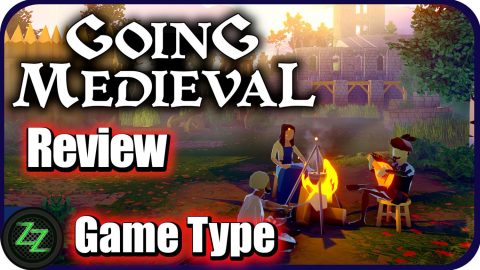
Game Type Survival Medieval Colony Builder
In the medieval build-up strategy game Going Medieval, we start with a few settlers and a few supplies somewhere in the middle of nowhere. The first thing we do is to build a small room because the colony inhabitants want a place to sleep in a permanent building, otherwise, they will quickly become unhappy. So this includes a floor, walls, roof, and of course a door.
Our settlers are complex beings. They have all sorts of character values that we can look at more closely to figure out how they’re doing. And in total, the colonists can gain experience in 13 different skills and gradually increase them. Learning by doing applies here, almost every action of the little scurrying people is assigned to a skill and gives experience for it.
There are plenty of different raw materials and food. The few building options at the beginning quickly turn into many different components, workbenches, furniture, tools, armor, and weapons that we can craft through research.
Going Medieval is roughly similar to the popular game RimWorld. Except that here we have a 3D world that can be freely rotated and zoomed, and we can construct our buildings above and below ground on a total of 16 floors.
It offers an observer and construction part comparable to “The Sims”, but on the other hand, it also has complex survival mechanics. The inhabitants get hungry, they freeze in winter, and also get circulatory breakdowns in summer during heat waves.
The goal of the game is to build our own little colony, from a wooden hut to a huge castle complex. If you like, you can also dig an underground fortress into the ground. But we have to protect our people from many dangers and always provide them with enough of everything they need.
When creating the world, we can choose whether we want to settle only peacefully before us, or also have the whole package of dangers. Because with that, there are also attacks from neighboring settlements that send us raiding parties. These then come by every few months. Their goal is to raze our settlement to the ground and exterminate our inhabitants.
Going Medieval Gameplay – Characters and Simulation
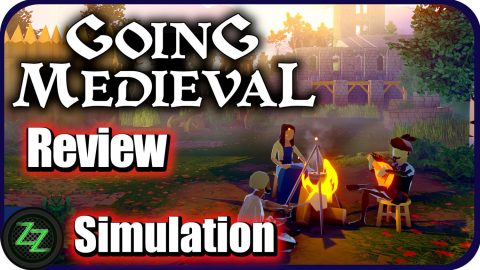
Characters and Simulation
The simulation of the settlers in Going Medieval is amazingly complex. Here, the gameplay borders on role-playing in terms of the characters’ stats and equipment. Each inhabitant not only has a name, age, certain advantages, and disadvantages, increases experience in certain professions, but there are also a variety of simulated values that we can look at closely.
In addition to the need for sleep, hunger, life energy, it is also necessary to keep the mood of the inhabitants high. To do this, they must be able to pray to one of the two deities. But also a good game of backgammon or a meal together with the housemates counts to the good life. Equally important is also the furnishing of their rooms, the quality of the bed, the amount of alcohol available, and many other factors that have an influence on their well-being.
So there are plenty of things we can improve in our colony to make our residents happier. And we should do this urgently because unhappy, hungry, or even injured settlers not only work slower but may not work at all. And if our buildings are too poorly constructed, and it’s minus 35 degrees C in the winter during a cold snap, it won’t take any nasty neighbors or wolves to move our simulated housemates from the living to the dead.
For this, we can also control and upgrade clothing, armor, and weapons. We have possibilities to make settings for each inhabitant separately. Thus, as in a timetable, we can influence their daily routine and set exact priorities, who works more in which professions or which tasks they should rather leave altogether.
Almost always we control our crowd of workers, roommates, or warriors indirectly in the process. But we can also issue direct “do this now” commands for individual actions by selecting a worker and clicking on a construction site or something else useful. Or, in the case of attacks, we can control them completely directly, as in a real-time strategy game, by enlisting them as soldiers.
The world is simulated with an accurate change of seasons. There are temperature values, not only general outdoor temperatures but depending on the location of the rooms, type of walls, etc., there are separate temperature values in each individual square in our buildings.
In winter, our inhabitants are happy to have particularly heat-insulating clay walls, prefer closed windows and doors, and a heating bowl next to the bed or in the living room ensures less frostbite.
But in the summer we’d better turn off the heaters and maybe open the windows. And places that are too warm also make our food rot faster, for example, but more on that in the next section.
The possibilities offered in Going Medieval and the simulation depth are already impressive at the Early Access launch. And the developers have a lot more planned there.
Going Medieval Gameplay Screenshots (Part 1)
Click or tap on the image for a larger view.
In the enlarged view, you can scroll right and left on the edges
Crafting and Gathering
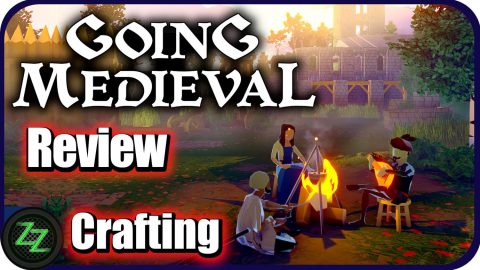
Crafting and Gathering
Everything in our village has to be made by our residents themselves. The wall for the first bedroom is made of wood, which has to be cut from trees, brought to the construction site, and then every single piece of the wall also has to be carpentered by a worker first.
Even a single small room of a few square meters consists here already of tens of components and possibly dozens or hundreds of work steps. Each floor slab, each wall section, each door, each piece of the roof are a separate construction site in itself, which must be set up, supplied with building materials, and also carpentered together. And we can plan exactly which piece should go where.
Building houses in Going Medieval here is a bit like constructing a Lego model. Piece by piece, baseplate by baseplate, we get closer to a complex building. And we can not only build upwards but also dig downwards.
The world has numerous different plants, ore types and through research, we gradually unlock almost twenty workbenches in a technology tree. At these we can then create complex build orders, whether it’s something simple like “cook three soups” or more complex orders like “whenever the global stock of one-handed axes falls below 5, make a new one” or “recycle all leather helmets which have fallen below 10% durability”.
The game starts gently with a few simple wooden components and a few workbenches. Over time, however, it develops into a huge amount of different raw materials, intermediate materials, components, equipment, and much more. In total, there are currently several hundred different types of items that we can mine, grow, process, store, wear, use, or eat.
Every component and piece of equipment here can also be torn down and replaced at any time, and can also be damaged during attacks. Thereby, the game simulates in rough ranges also the house statics. Say, we tear down load-bearing walls or build too large rooms without appropriate support beams, the structure above may collapse completely.
Oh well, did I mention that food needs to be stored in a cool place because otherwise, it will go moldy faster? Or that equipment also needs to be kept dry and protected, because otherwise, the supply of iron axes will eventually rust? And also with the use of weapons and armor, each use causes wear off, so that here again and again something new must be built.
Since the world is subject to simulated seasons, some stockpiling is required here. This is because the berries from which we brew our liquor are only available from summer to fall. In the fields that we can create, just like in the surroundings, certain plants grow only at certain times. And the cute rabbits and deer, which our cooks pack into delicious dried meat packages, cannot be found in winter.
And winter is going to be long and terribly cold. So we’d do well to build up a well-stocked storeroom of provisions if we don’t want to watch the settlers freeze or starve to death just before spring.
Going Medieval Early Access – State of the Game
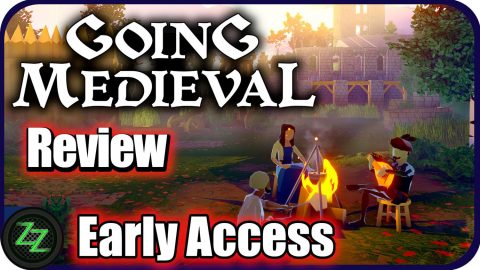
State of the Game
In Early Access titles, you are often faced with half-finished games that have plenty of construction sites. Crashes, illogical bugs, and patchy gameplay can easily spoil the fun.
In Going Medieval, however, this doesn’t really apply. The game already runs very smoothly and almost completely crash-free. Besides that, it already has a lot of features in the first Early Access version which has no need to hide. There is no direct campaign, but three different ways to start an endless game, and the maps are randomly generated each time.
Here the designation “Early Access” is probably rather assigned to the fact that the developers still have so many plans for their project. And they would like to push this further development also together with the community. In addition to the anyway very long list of already existing and working game elements, there is an equally extensive list of planned features.
On the roadmap for Going Medieval, you can then find exciting ideas such as caves and ruins, combustible structures, pathways, merchants, caravans, diplomacy with the surrounding countryside, social interactions between your inhabitants, siege equipment, taming and breeding animals, deeper religion systems, etc., etc., etc.
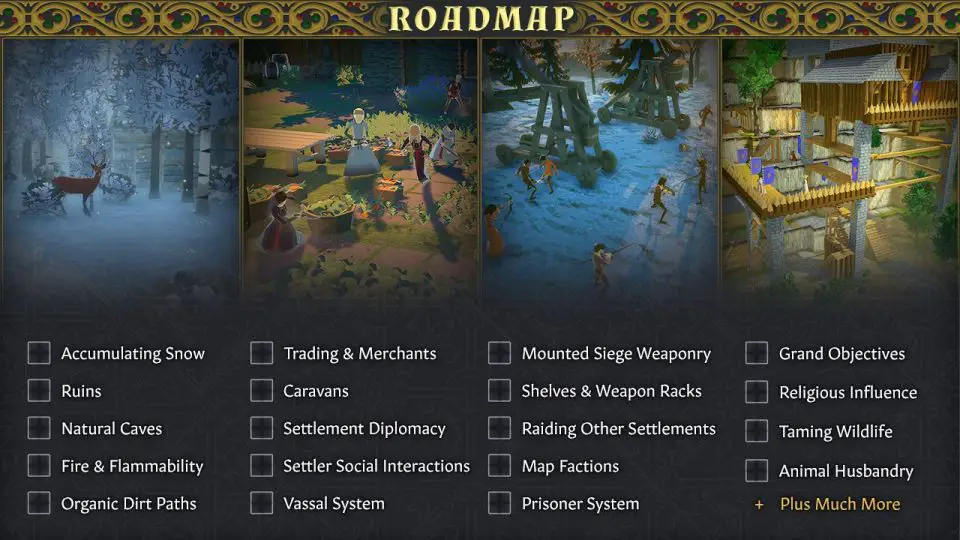
Tech, Graphics, Sound, Engine, GFX, SFX, Translation

Tech, Graphics, Sound, Engine, GFX, SFX, Translation
Technically, Going Medieval is based on the Unity engine, which provides for appealing 3D graphics and good performance in large parts. However, there are limits here, with increasing complexity of the settlement at the moment, unfortunately, the FPS are also decreasing.
And even though the game knows how to create a chic and pleasantly illuminated world in overview, all elements are executed in the so-called low-poly style. So you can’t expect super detailed textures when zooming in.
However, you definitely have to take into account that there is a small team behind the game and this is their first creation. And for that, what is offered is really already impressively complex, stable and also good in performance.
The models of the characters are lovingly animated, they have oodles of different activities that you can actually always see well. All equipment is represented directly on the inhabitants. The biggest minus in the visuals for me are the missing faces. With this I lie the developers since the alpha in the ears, unfortunately so far without success.
The soundtrack is coherent, many actions of the inhabitants make sounds. I assume some gaps will be filled in this area though. Some activities, like cutting trees, but for that even have numerous different sounds that vary depending on how far away you are from the wood chopper with the camera. This is a very nice effect. I would like to see more of that.
Going Medieval has an extensive options menu, allowing you to adjust the game to suit any weaker hardware. But also key bindings, sounds and game values like units of measurement or the UI scaling can be changed.
There is no voice output, but the game has on-screen texts in a total of 11 languages. At that, the German and English translations are definitely very well done. I can’t say anything about the quality of the other languages, but I assume the texts are correct as well.
Going Medieval InGame Screenshots (Part II)
Click or tap on the image for a larger view.
In the enlarged view, you can scroll right and left on the edges

Ora et Labora
Kitchen and the Great Hall
Interior Design 2 isometric
Interior Design
Going Medieval Review
Ingame Menu
Going Medieval Test
farming and selfsupply
Going Medieval Review
Farmers at work
Going Medieval Test
everything starts small
Going Medieval
Everything is better with a roof
Digging into the deep 
Going Medieval Review
Deer means game meat
Going Medieval Test
Claywalls help against the cold
Going Medieval Review
Workshops and Storage
Going Medieval Test – Opinion and Conclusion
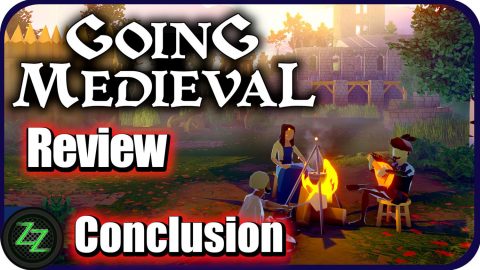
Opinion and Conclusion
The game has a lot of positives, but not everything is perfect. Considering the early state of the game, it’s actually amazing what all works already. But there are still rough edges, of course.
Here and there there is a lack of soundscapes, sometimes the controls are a bit fiddly. With the display of more complex buildings it becomes nevertheless sometimes somewhat confusing and not always you catch the things, which you wanted to click. So you unfortunately activate more often times, instead of the floor plate, which you wanted to mark, the table one floor below, or similar little problems.
There are still some “mass marking” functions missing, for example for floor plates. If you want to tear off something there, for example, you then have to click through each one individually. Also a replace or upgrade function to replace a wooden component later with stone would be really helpful.
Some “direct commands” are still missing, like healing wounds directly without having to wait for the sick person to fall into bed first.
The control of the doors is unfortunately still mediocre. You can close an open window directly, but not a door, which can be pretty stupid in case of an attack, if once again the woodcutter forgot to close the castle door when coming home.
The automatic changing of armor and clothing could work better, that’s probably still a construction site. When digging holes, sometimes you can’t build stairs down because some clay fell on the place where the stairs should go, and then the building spot is blocked.
Generally, a little more goals and challenges would be good, so that a better long-term motivation would be ensured. And as the biggest wish remains with me that one would spend the inhabitants really still something prettier models and a face.
Generally, of course, everything can be improved, expanded, extended, the wish list is long. But most of the things mentioned are just cumbersome, hardly really game fun reducing. This is probably also complaining at a high level.
But what is already there gives at least me now already a lot of fun. With the many components and by a growing settlement constantly increasing demand for space, one also has some motivation to keep expanding the buildings.
This simulation goes into depth. And depth here describes not only the simulation depth, but also the possibilities to build not only upwards, but also downwards into the ground. I think with these possibilities you can build wonderfully convoluted buildings. Although not yet completely perfect, the 3D building mode is a very ingenious thing with which you can have very many hours of fun.
If you play with combat, there are always attacks from constantly growing hordes. So here we also need to create tactically good defenses, ramparts, weirs for the archers and possibly moats.
It’s just fun to give shape to the settlement and gradually construct your castle building ideas into the fancy world. And the many professions, needs and problems, as well as random events such as wolf packs, heat and cold waves, thunderstorms or the like, round out the positive simulation experience.
I’m already actually enjoying the game. But I’m also looking forward to what the developers will build into it in the future. And besides the developers’ plans, when asked about modding support, the answer was a smile and a “yeah, probably.”
I have been accompanying this game since the first alpha and beta tests. Almost everything I had to grumble about the game, the developers got as a result from me months or weeks ago as feedback and very much of it was then already fixed and adjusted.
Well, what can I say, I am very excited about the game. I’ll sum it up like this, actually I wanted to get this review out 2-3 days ago, but it all got delayed a bit. Because I was too captivated by the gameplay, that always distracted me from writing.
Going Medieval is available for €22.99 or just under $28 on Steam, the Epic Store, and GOG. And there is also a discount on this already more than reasonable price for a few days. If you want to support my work, I also have links below where you can get the game a bit cheaper and I would also get a commission.
Already now at Early Access release, the game offers more features and it runs more smoothly than many full versions at an often higher price. An excellent start to Early Access. I look forward to following the game as it continues its journey.
Going Medieval Review – Rating
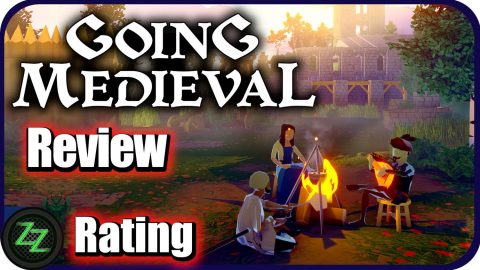
Rating and Scoring
Construction, economics, and village simulation mixed with some real-time strategy and survival, that is the recipe for Going Medieval. And wow, did the developers go into detail on this. Summing it all up, I would like to give Going Medieval a base score of 85%, for this excellent start in Early Access.
The minor flaws in usability, graphics quality, and soundtrack are not strong deciding factors, but I still want to deduct 3 % for them. This brings me to a final rating for Going Medieval now on EA release of 82 %.
If the game continues to develop this well, realizes all the goals on the roadmap, and maybe really gets modding support, then we would have a gem here that could be refined for many years to come. With that perspective, I see chances for a simulation hit for a long time and potential for a 90 % percent rating in maybe a year.

Rating with Numbers 82 percent
Going Medieval

In this Going Medieval Review (Gameplay PC) I’ll show you the new medieval colony builder game with survival and RPG elements. Castle building and defense in 3D with very detailed simulation, seasons, and all kinds of dangers for the settlers. Going Medieval will be released for PC in June 2021 on Steam, Epic Store, and GOG in Early Access.
Rating
Construction, economics, and village simulation mixed with some real-time strategy and survival, that is the recipe for Going Medieval. And wow, did the developers go into detail on this. Summing it all up, I would like to give Going Medieval a base score of 85%, for this excellent start in Early Access.
The minor flaws in usability, graphics quality, and soundtrack are not strong deciding factors, but I still want to deduct 3 % for them. This brings me to a final rating for Going Medieval now on EA release of 82 %.
If the game continues to develop this well, realizes all the goals on the roadmap, and maybe really gets modding support, then we would have a gem here that could be refined for many years to come. With that perspective, I see chances for a simulation hit for a long time and potential for a 90 % percent rating in maybe a year.
Outro
Do you like to build a medieval colony and protect your settlers against cold, wolves, and nasty neighbors? Or are low-poly graphics and those many menus nothing you can find fun in? Feel free to write me your opinion in the comments or in the community Discord.
More gaming news, game reviews, and guides can be found on the YouTube channel or here at https://zapzockt.de – thumbs click, subscribe and share with friends certainly can’t hurt, and then I wish you a great day, ciao ciao, your Zap
Links and Sources
Buy Going Medieval at Gamesplanet cheaper (Steam)
Buy Going Medieval at Epic Games Store
(Affiliate Link/As)
For every purchase through one of these links you get a discount and I get a small commission from Gamesplanet, so you also support the channel and the website at the same time, and save money.


![Going Medieval Review - Village building strategy with RPG and survival in the test 2 Going Medieval Review - Dorf Aufbau Strategie mit RPG & Survival im Test [Deutsch, many subtitles]](https://i.ytimg.com/vi/HeWIoQgFLz0/maxresdefault.jpg)

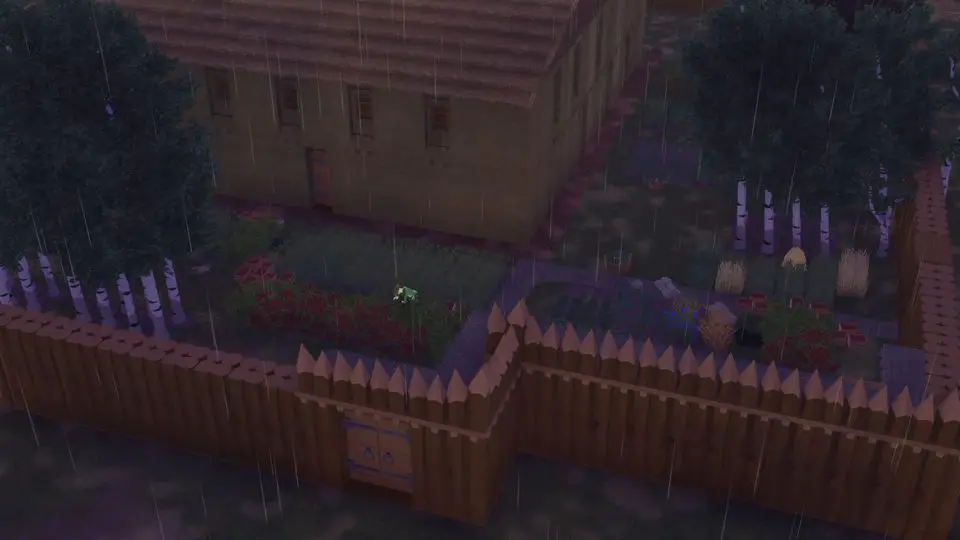


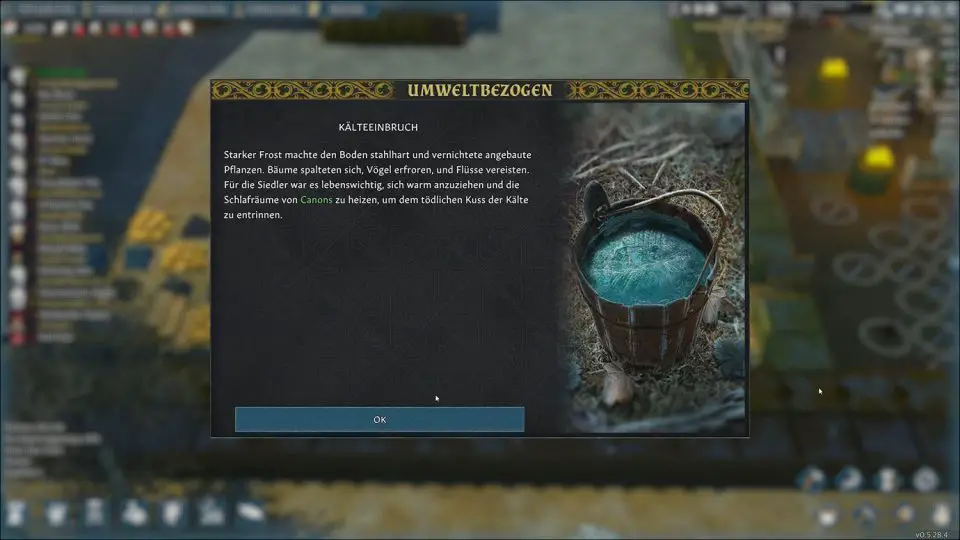
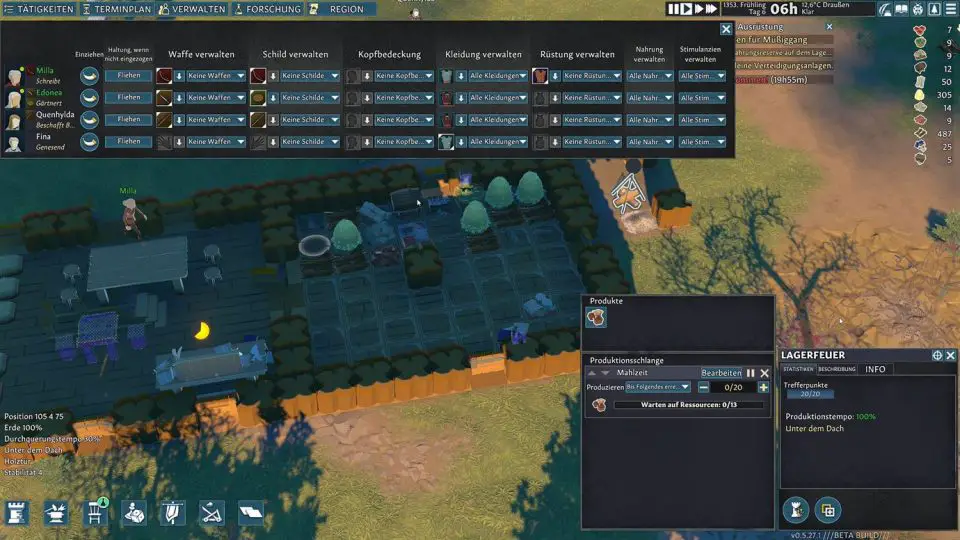
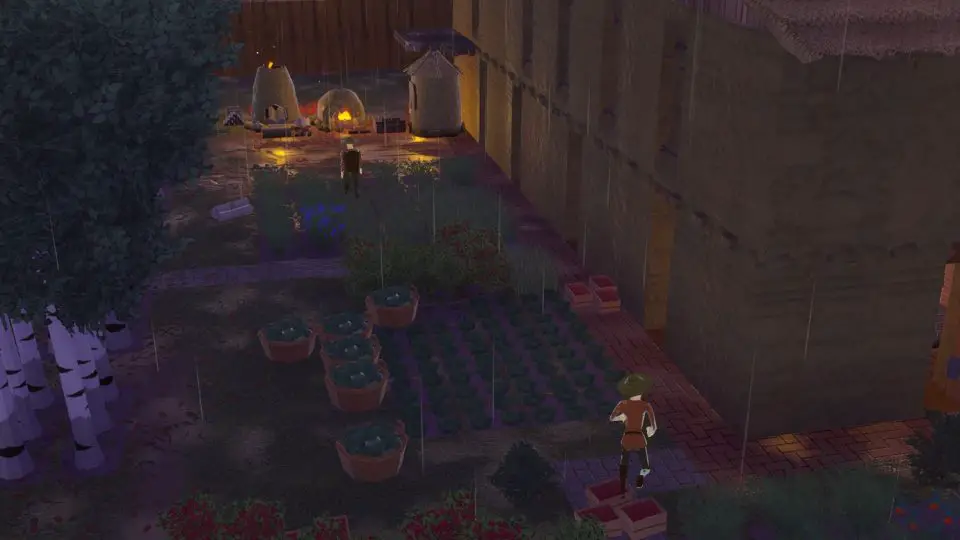


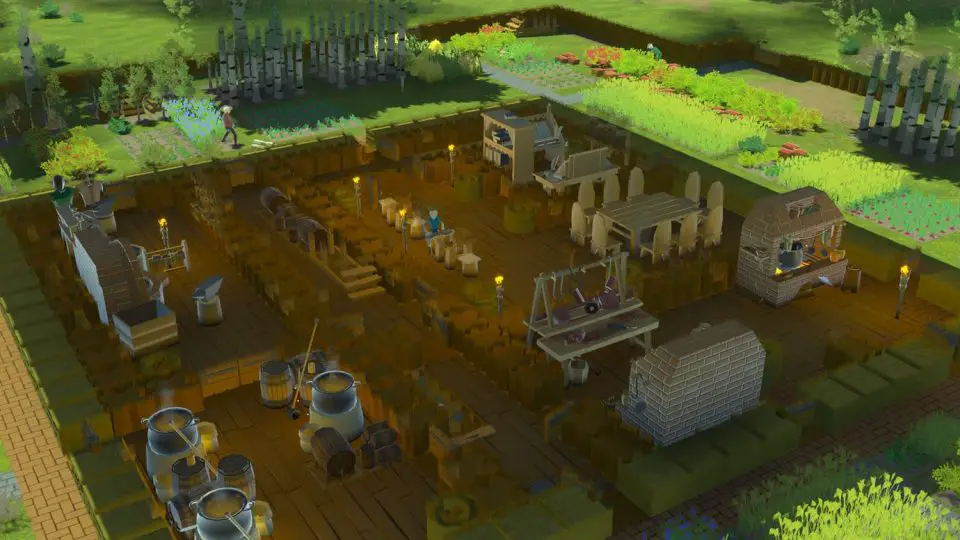

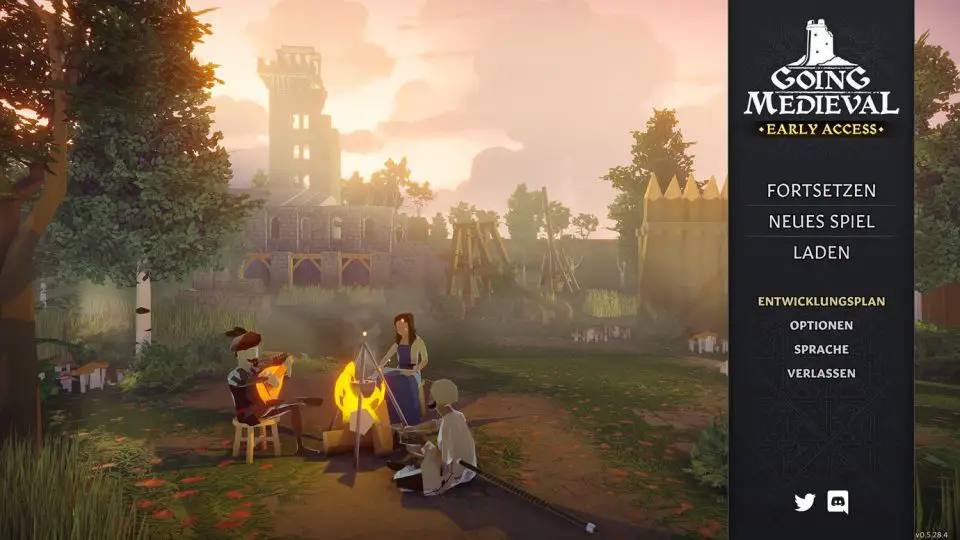
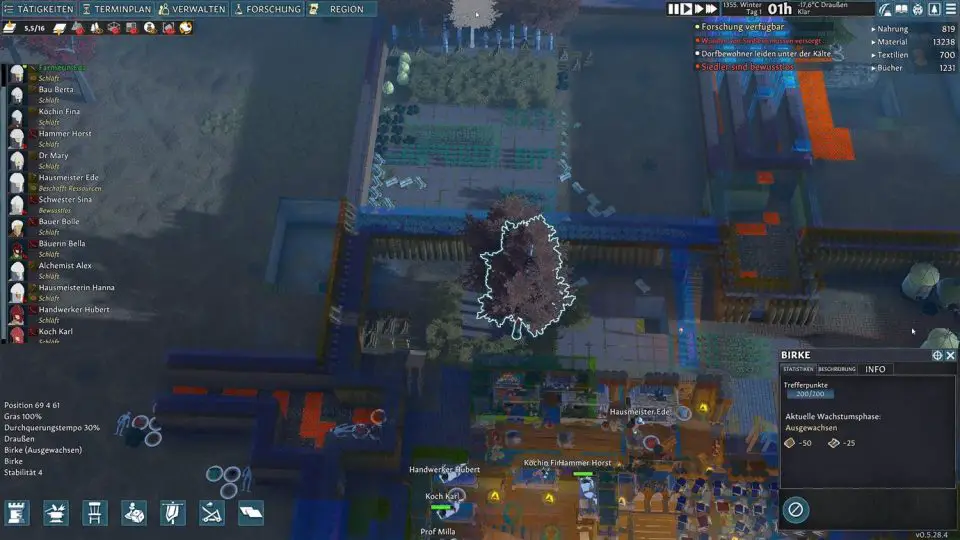

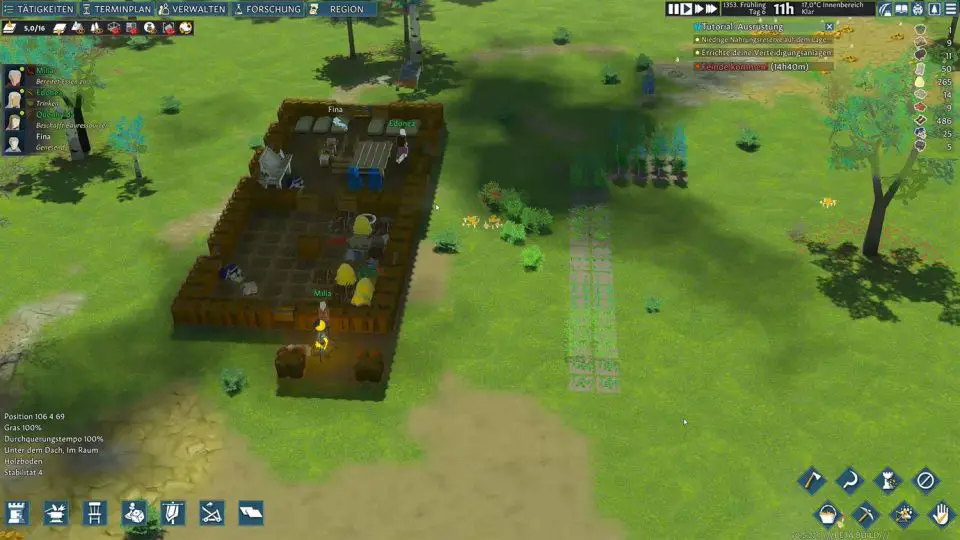
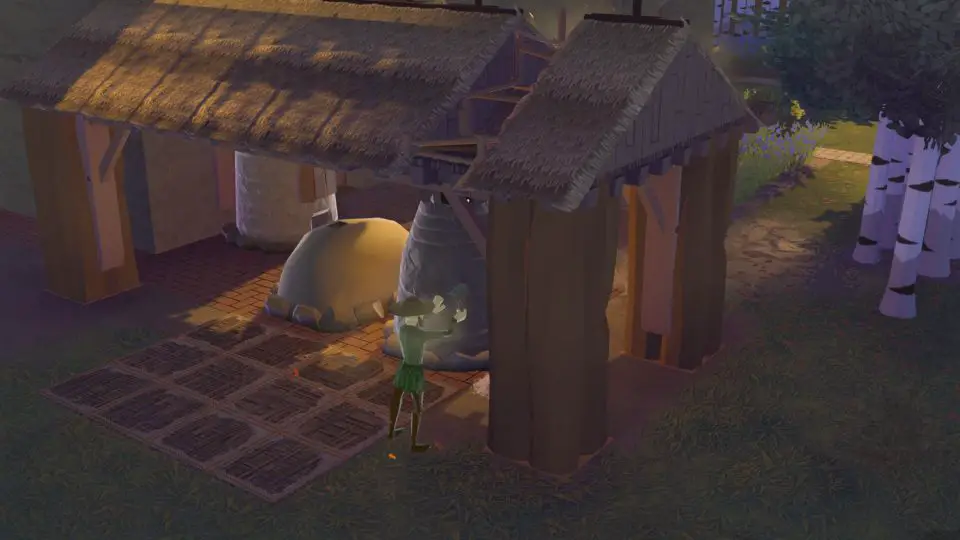

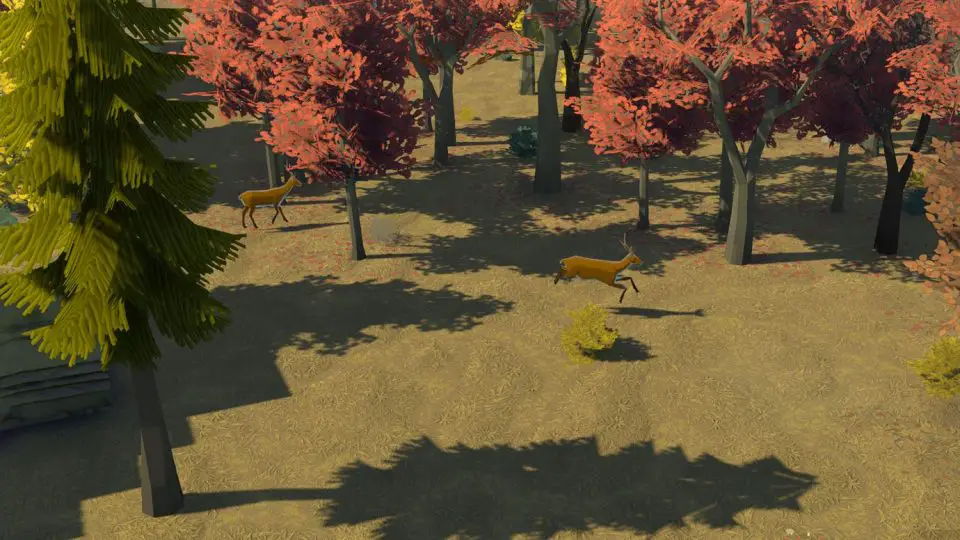
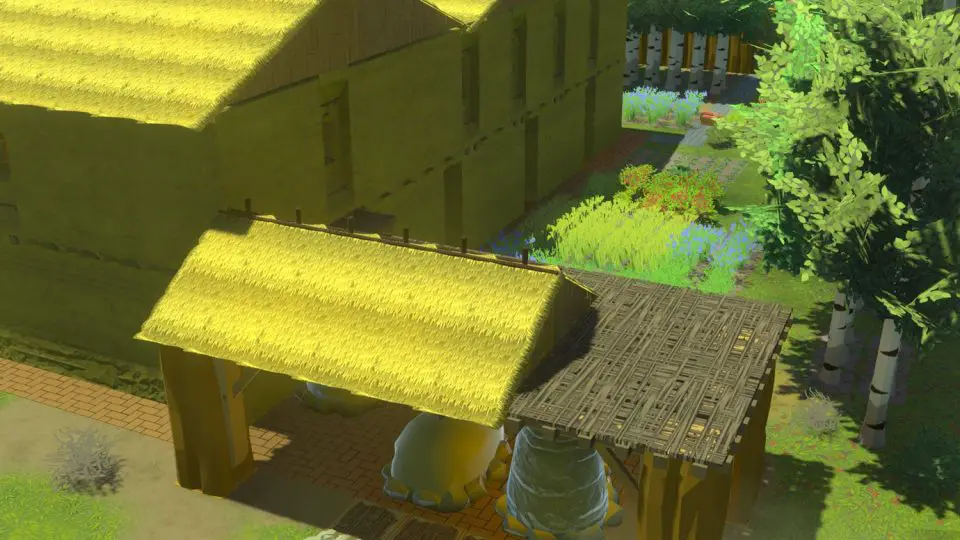
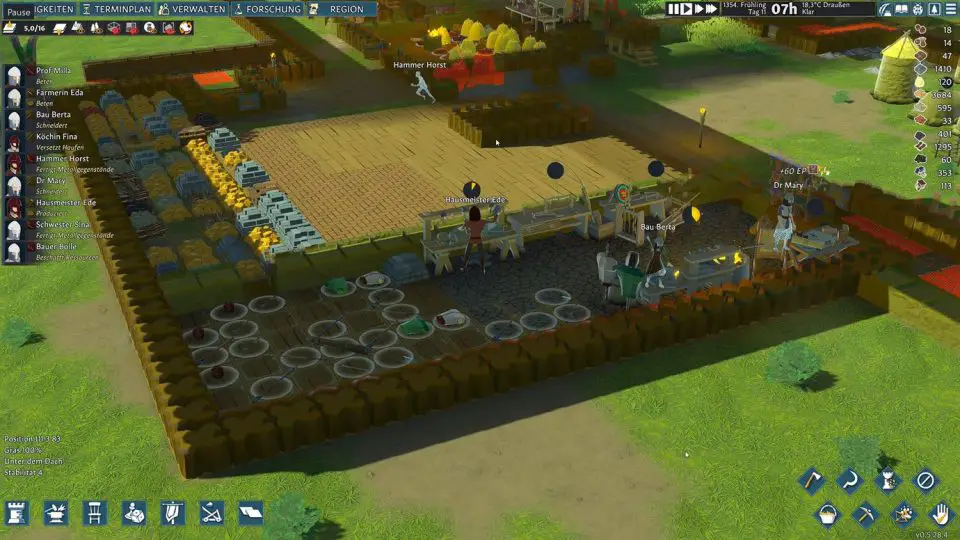



![Starfield Review - Bethesda's Space Role-Playing Game in the Test Starfield Review - Grandioses Space-RPG mit spitzen Ecken & harten Kanten im Test [PC Deutsch]](https://zapzockt.de/wp-content/uploads/Starfield-Review-Grandioses-Space-RPG-mit-spitzen-Ecken-harten-Kanten-im-Test-PC-Deutsch-240x135.webp)

